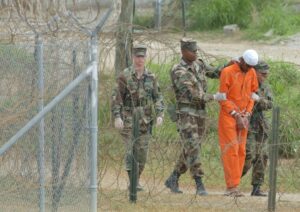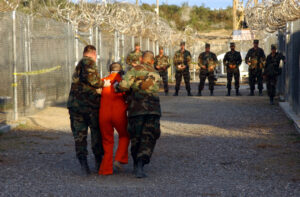The Pentagon’s Real Strategy: Keeping the Money Flowing
Focusing on Washington rather than on distant war zones, it becomes clear that the military establishment does indeed have a strategy -- a highly successful one: to protect and enhance its own prosperity. 401(K) 2012 / CC BY-SA 2.0
1
2
401(K) 2012 / CC BY-SA 2.0
1
2
These days, lamenting the apparently aimless character of Washington’s military operations in the Greater Middle East has become conventional wisdom among administration critics of every sort. Senator John McCain thunders that “this president has no strategy to successfully reverse the tide of slaughter and mayhem” in that region. Anthony Cordesman of the Center for Strategic and International Studies bemoans the “lack of a viable and public strategy.” Andrew Bacevich suggests that “there is no strategy. None. Zilch.”
After 15 years of grinding war with no obvious end in sight, U.S. military operations certainly deserve such obloquy. But the pundit outrage may be misplaced. Focusing on Washington rather than on distant war zones, it becomes clear that the military establishment does indeed have a strategy, a highly successful one, which is to protect and enhance its own prosperity.
Given this focus, creating and maintaining an effective fighting force becomes a secondary consideration, reflecting a relative disinterest — remarkable to outsiders — in the actual business of war, as opposed to the business of raking in dollars for the Pentagon and its industrial and political partners. A key element of the strategy involves seeding the military budget with “development” projects that require little initial outlay but which, down the line, grow irreversibly into massive, immensely profitable production contracts for our weapons-making cartels.
If this seems like a startling proposition, consider, for instance, the Air Force’s determined and unyielding efforts to jettison the A-10 Thunderbolt, widely viewed as the most effective means for supporting troops on the ground, while ardently championing the sluggish, vastly overpriced F-35 Joint Strike Fighter that, among myriad other deficiencies, cannot fly within 25 miles of a thunderstorm. No less telling is the Navy’s ongoing affection for budget-busting programs such as aircraft carriers, while maintaining its traditional disdain for the unglamorous and money-poor mission of minesweeping, though the mere threat of enemy mines in the 1991 Gulf War (as in the Korean War decades earlier) stymied plans for major amphibious operations. Examples abound across all the services.
Meanwhile, ongoing and dramatic programs to invest vast sums in meaningless, useless, or superfluous weapons systems are the norm. There is no more striking example of this than current plans to rebuild the entire American arsenal of nuclear weapons in the coming decades, Obama’s staggering bequest to the budgets of his successors.
Taking Nuclear Weapons to the Bank
These nuclear initiatives have received far less attention than they deserve, perhaps because observers are generally loath to acknowledge that the Cold War and its attendant nuclear terrors, supposedly consigned to the ashcan of history a quarter-century ago, are being revived on a significant scale. The U.S. is currently in the process of planning for the construction of a new fleet of nuclear submarines loaded with new intercontinental nuclear missiles, while simultaneously creating a new land-based intercontinental missile, a new strategic nuclear bomber, a new land-and-sea-based tactical nuclear fighter plane, a new long-range nuclear cruise missile (which, as recently as 2010, the Obama administration explicitly promised not to develop), at least three nuclear warheads that are essentially new designs, and new fuses for existing warheads. In addition, new nuclear command-and-control systems are under development for a fleet of satellites (costing up to $1 billion each) designed to make the business of fighting a nuclear war more practical and manageable.
This massive nuclear buildup, routinely promoted under the comforting rubric of “modernization,” stands in contrast to the president’s lofty public ruminations on the topic of nuclear weapons. The most recent of these was delivered during his visit — the first by an American president — to Hiroshima last month. There, he urged “nations like my own that hold nuclear stockpiles” to “have the courage to escape the logic of fear, and pursue a world without them.”
In reality, that “logic of fear” suggests that there is no way to “fight” a nuclear war, given the unforeseeable but horrific effects of these immensely destructive weapons. They serve no useful purpose beyond deterring putative opponents from using them, for which an extremely limited number would suffice. During the Berlin crisis of 1961, for example, when the Soviets possessed precisely four intercontinental nuclear missiles, White House planners seriously contemplated launching an overwhelming nuclear strike on the USSR. It was, they claimed, guaranteed to achieve “victory.” As Fred Kaplan recounts in his book Wizards of Armageddon, the plan’s advocates conceded that the Soviets might, in fact, be capable of managing a limited form of retaliation with their few missiles and bombers in which as many as three million Americans could be killed, whereupon the plan was summarily rejected.
In other words, in the Cold War as today, the idea of “nuclear war-fighting” could not survive scrutiny in a real-world context. Despite this self-evident truth, the U.S. military has long been the pioneer in devising rationales for fighting such a war via ever more “modernized” weapons systems. Thus, when first introduced in the early 1960s, the Navy’s invulnerable Polaris-submarine-launched intercontinental missiles — entirely sufficient in themselves as a deterrent force against any potential nuclear enemy — were seen within the military as an attack on Air Force operations and budgets. The Air Force responded by conceiving and successfully selling the need for a full-scale, land-based missile force as well, one that could more precisely target enemy missiles in what was termed a “counterforce” strategy.
The drive to develop and build such systems on the irrational pretense that nuclear war fighting is a practical proposition persists today. One component of the current “modernization” plan is the proposed development of a new “dial-a-yield” version of the venerable B-61 nuclear bomb. Supposedly capable of delivering explosions of varying strength according to demand, this device will, at least theoretically, be guidable to its target with high degrees of accuracy and will also be able to burrow deep into the earth to destroy buried bunkers. The estimated bill — $11 billion — is a welcome boost for the fortunes of the Sandia and Los Alamos weapons laboratories that are developing it.
Your support matters…Independent journalism is under threat and overshadowed by heavily funded mainstream media.
You can help level the playing field. Become a member.
Your tax-deductible contribution keeps us digging beneath the headlines to give you thought-provoking, investigative reporting and analysis that unearths what's really happening- without compromise.
Give today to support our courageous, independent journalists.







You need to be a supporter to comment.
There are currently no responses to this article.
Be the first to respond.